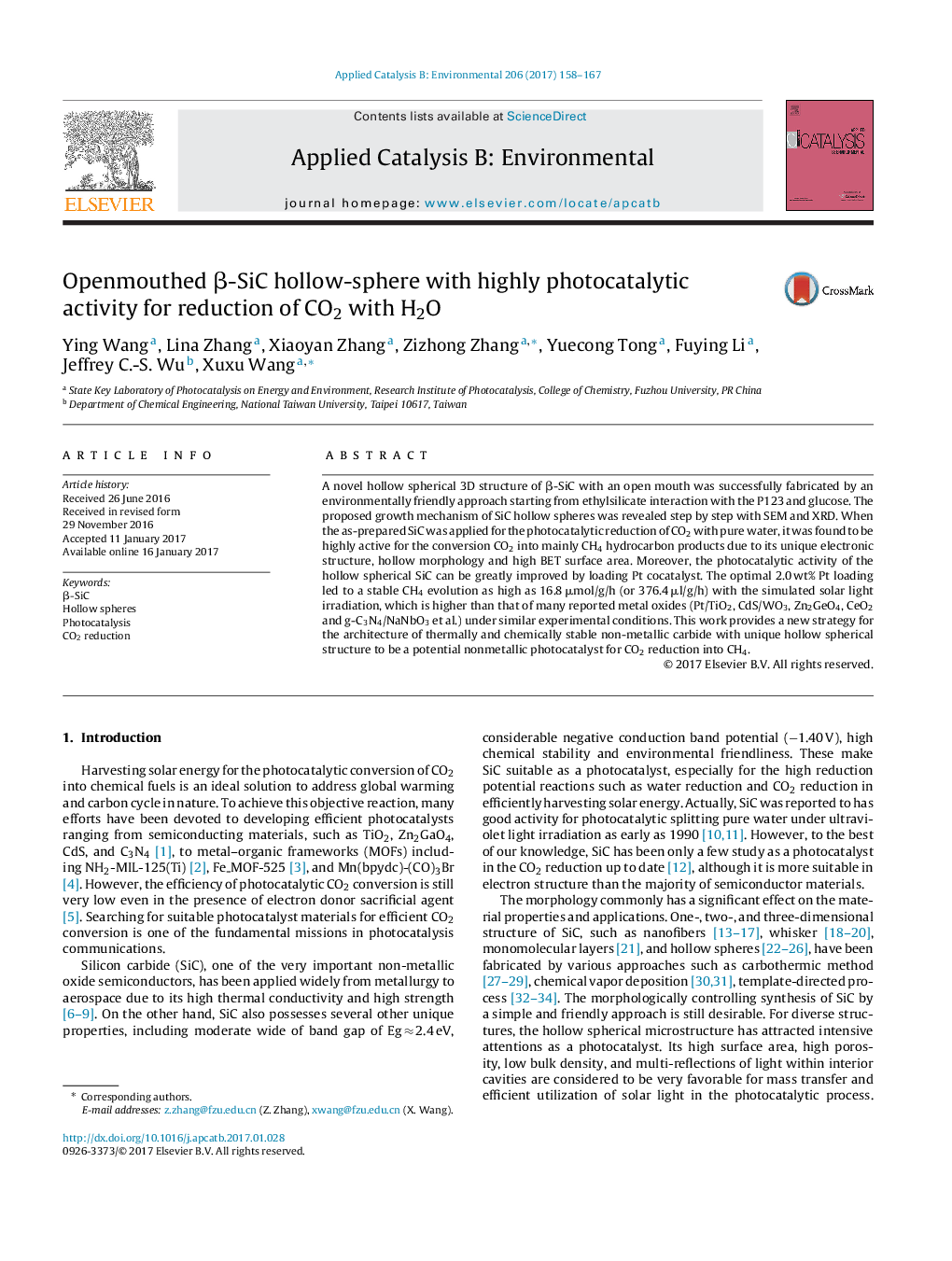| Article ID | Journal | Published Year | Pages | File Type |
|---|---|---|---|---|
| 6454656 | Applied Catalysis B: Environmental | 2017 | 10 Pages |
â¢Openmouthed β-SiC hollow-Sphere was developed in an environmentally friendly way.â¢The growth mechanism of β-SiC hollow spheres was proposed elaborately.â¢Î²-SiC is efficient and stable for photocatalytic CO2 conversion into CH4.â¢Pt deposition give a CH4 evolution rate as high as 67.2 μmol/g.â¢The optimal Pt/β-SiC is higher than many reported metal oxides for CH4 evolution.
A novel hollow spherical 3D structure of β-SiC with an open mouth was successfully fabricated by an environmentally friendly approach starting from ethylsilicate interaction with the P123 and glucose. The proposed growth mechanism of SiC hollow spheres was revealed step by step with SEM and XRD. When the as-prepared SiC was applied for the photocatalytic reduction of CO2 with pure water, it was found to be highly active for the conversion CO2 into mainly CH4 hydrocarbon products due to its unique electronic structure, hollow morphology and high BET surface area. Moreover, the photocatalytic activity of the hollow spherical SiC can be greatly improved by loading Pt cocatalyst. The optimal 2.0 wt% Pt loading led to a stable CH4 evolution as high as 16.8 μmol/g/h (or 376.4 μl/g/h) with the simulated solar light irradiation, which is higher than that of many reported metal oxides (Pt/TiO2, CdS/WO3, Zn2GeO4, CeO2 and g-C3N4/NaNbO3 et al.) under similar experimental conditions. This work provides a new strategy for the architecture of thermally and chemically stable non-metallic carbide with unique hollow spherical structure to be a potential nonmetallic photocatalyst for CO2 reduction into CH4.
Graphical abstractDownload high-res image (142KB)Download full-size image
